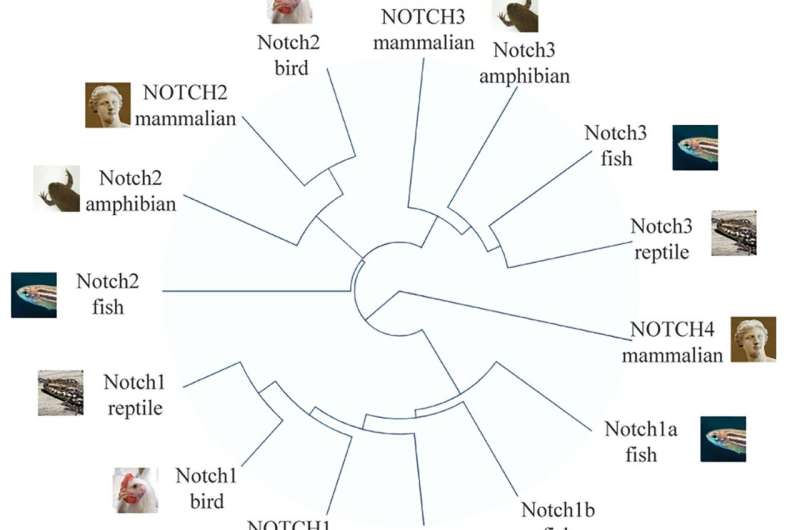This article has been reviewed according to Science X's editorial process and policies. Editors have highlighted the following attributes while ensuring the content's credibility:
fact-checked
peer-reviewed publication
trusted source
proofread
How the evolution of tooth enamel tissue unfolded

Researchers at the UZH Center for Dental Medicine have investigated the importance of the Notch pathway for the evolution of tooth morphology. Mutations in this signaling pathway can lead to defective structures in tooth enamel.
Studies of mammalian evolution often rely on the analyses of teeth, which are the best-preserved parts of fossilized skeletons. Tooth morphology and the composition of enamel—the most mineralized tissue of the body—constitute important criteria for speciation events that occurred over 200 million years of evolution. These evolutionary adaptations, which are linked to genetic modifications, have contributed to the extensive diversification of cell types in animals.
A team of researchers from the Center of Dental Medicine at the University of Zurich has identified the Notch pathway as the key gene network that is responsible for changes in tooth shape and enamel composition during evolution. The Notch pathway is an ancient, evolutionary conserved signaling mechanism that controls cell-fate decisions and proper morphogenesis of most organs, including teeth. The research is published in the journal Cellular and Molecular Life Sciences.
The evolution of teeth depends on Notch signaling
Using genetically modified mouse models, the research team of Thimios Mitsiadis, professor of oral biology at the Center of Dental Medicine at UZH, analyzed the effects of the Notch-ligands in teeth. Absence of those ligand molecules affected tooth morphology and enamel formation due to the alteration of numerous significant morphogenetic genes. Deregulation of the Notch pathway reverted the evolutionary cascade, thus generating less complex dental structures that are more reminiscent of the enameloid of fishes rather than that of mammalian enamel.
According to first author Mitsiadis, the study sheds new light on the Notch pathway as one of the crucial components for dental shape and enamel variations in evolution. "We hypothesize that the evolution of teeth depends on Notch signaling for the generation of new dental cell types from already existing primitive dental cell types, thus allowing the formation of more complex and unique dental structures such as tooth enamel," Mitsiadis said.
Enamel malformations in humans
The correlation between Notch molecules and the generation and/or maintenance of distinct dental cell types could represent a general mechanism underlying the evolution of specialized cell types in mammals. "In teeth, deregulation of Notch signaling initiates the suppression of specific dental cell types that were acquired during evolution. Loss of these cells leads to the generation of enamel malformations and tooth morphological alterations," Mitsiadis concludes.
Modeling of these changes allows predictions of how Notch-associated mutations in humans could affect the morphology and enamel of their teeth.
More information: Thimios A. Mitsiadis et al, The Notch-mediated circuitry in the evolution and generation of new cell lineages: the tooth model, Cellular and Molecular Life Sciences (2023). DOI: 10.1007/s00018-023-04831-7
Journal information: Cellular and Molecular Life Sciences
Provided by University of Zurich





















